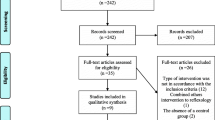Abstract
Whilst professional bodies such as the Royal College and the American College of Obstetricians and Gynecologists have well-established standards for audit of management for most gynaecology disorders, such standards for premenstrual disorders (PMDs) have yet to be developed. The International Society of Premenstrual Disorders (ISPMD) has already published three consensus papers on PMDs covering areas that include definition, classification/quantification, clinical trial design and management (American College Obstetricians and Gynecologists 2011; Brown et al. in Cochrane Database Syst Rev 2:CD001396, 2009; Dickerson et al. in Am Fam Physician 67(8):1743–1752, 2003). In this fourth consensus of ISPMD, we aim to create a set of auditable standards for the clinical management of PMDs. All members of the original ISPMD consensus group were invited to submit one or more auditable standards to be eligible in the inclusion of the consensus. Ninety-five percent of members (18/19) responded with at least one auditable standard. A total of 66 auditable standards were received, which were returned to all group members who then ranked the standards in order of priority, before the results were collated. Proposed standards related to the diagnosis of PMDs identified the importance of obtaining an accurate history, that a symptom diary should be kept for 2 months prior to diagnosis and that symptom reporting demonstrates symptoms in the premenstrual phase of the menstrual cycle and relieved by menstruation. Regarding treatment, the most important standards were the use of selective serotonin reuptake inhibitors (SSRIs) as a first line treatment, an evidence-based approach to treatment and that SSRI side effects are properly explained to patients. A set of comprehensive standards to be used in the diagnosis and treatment of PMD has been established, for which PMD management can be audited against for standardised and improved care.


Similar content being viewed by others
References
American College Obstetricians and Gynecologists, ACOG (2011) Premenstrual syndrome 57(3). http://www.acog.org/Patients/FAQs/Premenstrual-Syndrome-PMS
Borenstein JE, Dean BB, Yonkers KA, Endicott (2007) Using the daily record of severity of problems as a screening instrument for premenstrual syndrome. Obstet Gynecol 109:1068–75
Brown J, O’Brien PMS, Marjoribanks J, Wyatt K (2009) Selective serotonin reuptake inhibitors for premenstrual syndrome. Cochrane Database Syst Rev 2:CD001396
Dickerson L, Mazuck P, Hunter M (2003) Premenstrual syndrome. Am Fam Physician 67(8):1743–1752
Dimmock PW, Wyatt KM, Jones PW, O’Brien PM (2000) Efficacy of selective serotonin-reuptake inhibitors in premenstrual syndrome; a systematic review. Lancet 356:1131–1136
Ismail K, Nevatte T, O’Brien PMS, Paschetta E, Bäckström T (2013) Clinical subtypes of core premenstrual disorders: a Delphi survey. Arch Womens Ment Health 16:197–201
Kadian S, O’Brien S (2012) Classification of premenstrual disorders as proposed by the International Society for Premenstrual Disorders. Menopause Int 18:43–7
Lopez LM, Kaptein AA, Helmerhorst FM (2012) Oral contraceptives containing drospirenone for premenstrual syndrome. Cochrane Database Syst Rev (Issue 2). Art. No.: CD006586
Nevatte T, O’Brien PMS, Backstrom T, Brown C et al (2013) ISPMD consensus on the management of premenstrual disorders. Arch Womens Ment Health 16:279–291
O’Brien PMS, Bäckström T, Brown C, Dennerstein L, Endicott J, Epperson CN et al (2011) Towards a consensus on diagnostic criteria, measurement and trial design of the premenstrual disorders: the ISPMD Montreal consensus. Arch Womens Ment Health 14:13–21
Panay N (2009) Management of premenstrual syndrome. Br Med J 35(3):187–194
Rapkin AJ, Kuo J (2007) Neurotransmitter physiology: the basics for understanding premenstrual syndrome. In: O’Brien PMS, Rapkin A, Schmidt P (eds) The premenstrual syndromes: PMS and PMDD. Informa Healthcare, London, pp 69–71
Royal College of Obstetricians and Gynaecologists. Premenstrual syndrome, management (Green-top Guideline No. 48). London:RCOG (2007) https://www.rcog.org.uk/en/guidelines-researchservices/guidelines/gtg48/.
Shah NR, Jones JB, Aperi J, Shemtov R, Karne A, Borensstein J (2008) Selective serotonin reuptake inhibitors for premenstrual syndrome and premenstrual dysphoric disorder: a meta-analysis. Obstet Gynecol 111:1175–1182
Wyatt KM, Dimmock PW, Ismail KM, Jones PW, O’Brien PM (2004) The effectiveness of GnRHa with and without ‘add-back’ therapy in treating premenstrual syndrome: a meta-analysis. BJOG 111:585–593
Yonkers KA, Brown C, Pearlstein TB, Foegh M, Sampson-Landers C, Rapkin A (2005) Efficacy of a new low-dose oral contraceptive with drospirenone in premenstrual dysphoric disorder. Obstet Gynecol 106:492–501
Yonkers K, O’Brien PMS, Eriksson E (2008) Premenstrual syndrome. PubMed 10:1200–1210
Author information
Authors and Affiliations
Consortia
Corresponding author
Ethics declarations
Conflict of interest statement
The consensus was achieved electronically and via e-mails amongst experts; thus, it was not funded by any external provider. There are no conflicts of interest to report.
Rights and permissions
About this article
Cite this article
Ismaili, E., Walsh, S., O’Brien, P.M.S. et al. Fourth consensus of the International Society for Premenstrual Disorders (ISPMD): auditable standards for diagnosis and management of premenstrual disorder. Arch Womens Ment Health 19, 953–958 (2016). https://doi.org/10.1007/s00737-016-0631-7
Received:
Accepted:
Published:
Issue Date:
DOI: https://doi.org/10.1007/s00737-016-0631-7




